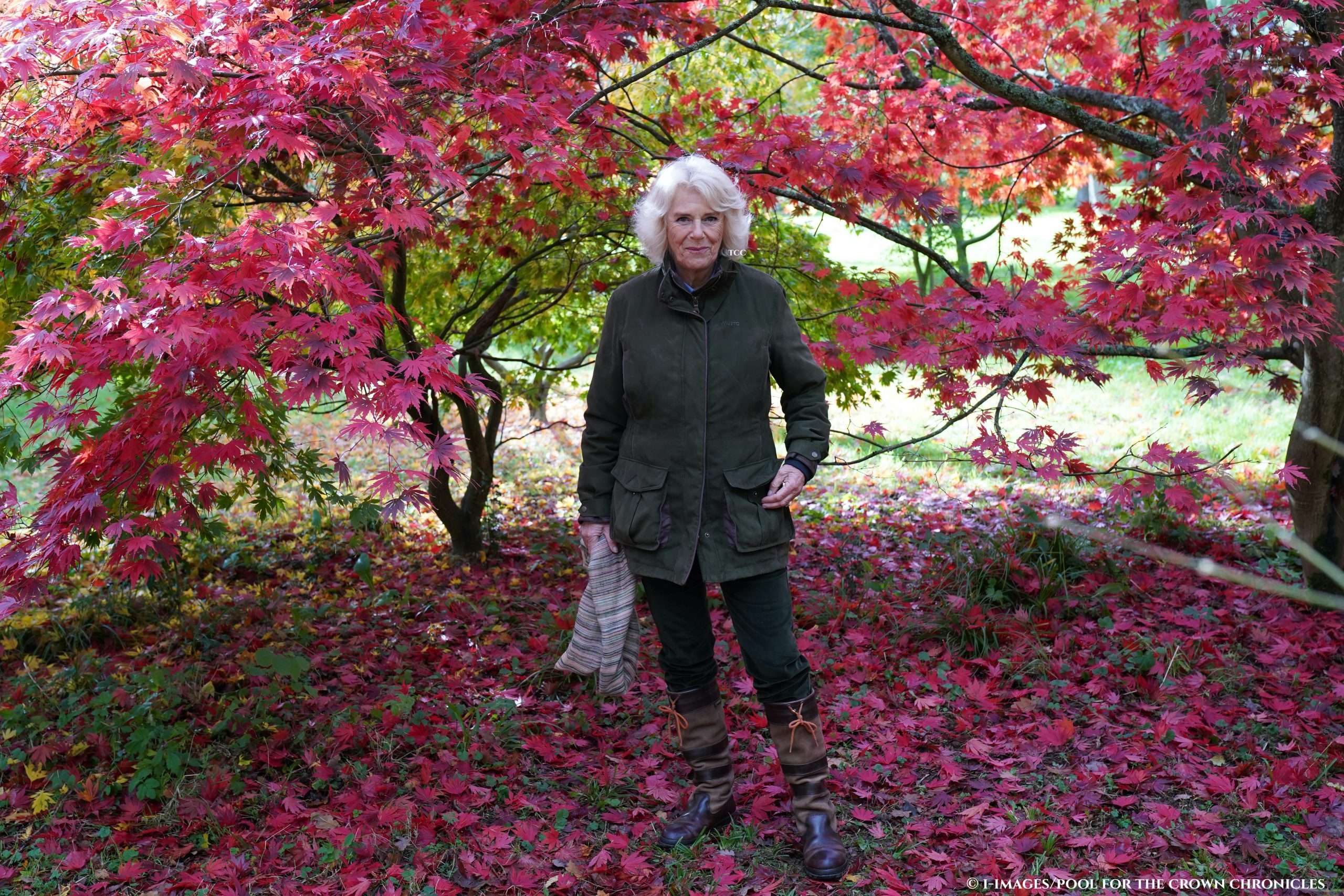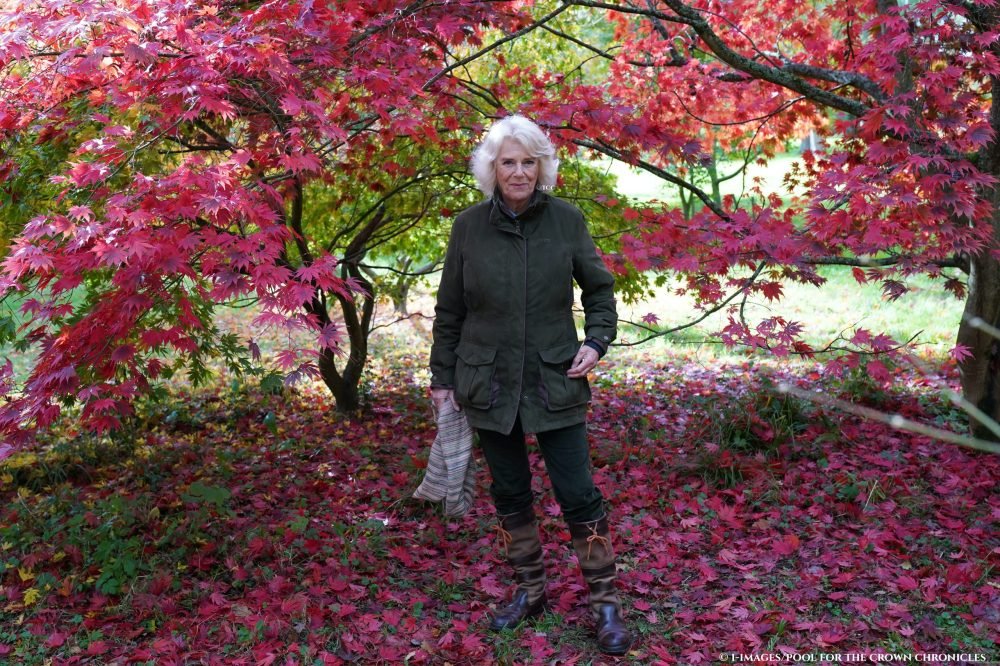Reds, golds and green awaited The Duchess of Cornwall at the National Arboretum in Tetbury today. Camilla was at the park to visit Westonbirt, as Patron of the Friends of Westonbirt Arboretum.
Camilla was dressed down in a khaki Musto jacket and Dubarry equestrian boots, being greeted by Andrew Smith, Director of the Arboretum, and Mike Coe, Director of the Friends of Westonbirt.

The royal visitor surprised members of the public as she walked through the arboretum, which is a botanical garden of trees, and renowned worldwide for its collection.
It was established in the 1850s by wealthy landowner Robert Holford and later developed by his son George Holford, and continues to offer an escape and leisure space for locals and tourists alike. The Arboretum attracts over 550,000 visitors a year, and is famed for its spring and autumn colour displays, which the Royal was treated to today.
Camilla has been patron of Friends of Westonbirt Arboretum since 2005 and is one of her earliest charitable links. The organisation was formed in 1985 by a small group of volunteers, and it raises money to help protect and preserve the arboretum, enhance public enjoyment and knowledge of this world-renowned tree collection and secure its sustainable future.
HRH was taken across Treetop Walkway, which is 300m long and 13m high, enabling visitors the opportunity to experience the world of the tree canopy, rather than looking up towards it.
Travelling between locations in a golf buggy, the Duchess returned to Maple Loop, where she and Prince Charles planted a tree 14 years ago; it was the 100th maple tree in the Rotary Glade, marking the 100th Anniversary of Rotary International.
The Duchess of Conrwall posed for photos amongst the glorious red maple boughs.

Staff chatted to Camilla at the Community Shelter, which looks to bring ‘hard to reach audiences’ to the arboretum, whilst supporting positive mental health and wellbeing through a programme of activities.
Here she also learnt of the Silk Wood Ash Dieback. The disease has been affecting ash trees across Europe and the UK, causing thinning in the crown, and ultimately the death of the tree. The disease is likely to cause significant damage to the UK’s ash tree population.
Unfortunately, trees in Westonbirt Arboretum have become infected, so Forestry England is acting to remove these infected ash trees over the winter to make way for new plantings of various species, which will help to create a resilient woodland.








